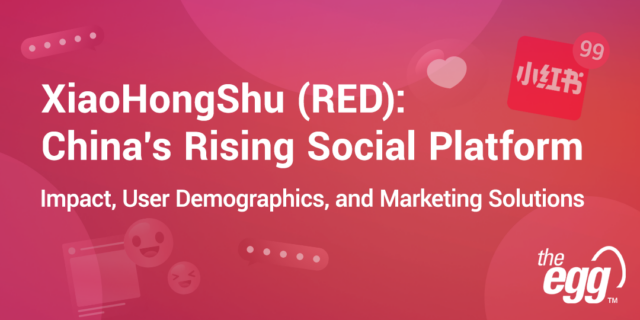China has the greatest number of internet users in the world: 904 million. Of these, 872 million accessed the internet via mobile device in 2019, with that number only growing during the lockdowns and social distancing of 2020.
This level of mobile internet penetration combined with China’s affinity for social media make the Chinese market primed for online engagement and among the world’s most sophisticated and mature in the development, deployment, and uptake of social retail technology.
In this article, we share the evolution of social retail in China and how to establish a strong human-focused and customer-centric social-retail strategy in China’s new normal.
China Social Retail Stats: Social Media 2020
The top social platforms in China boast more than 2 billion monthly active users combined:
- WeChat: 1.1 billion MAU
- QQ: 800 million MAU
- Weibo: 500 million MAU
And mobile social media use in China has done nothing but continue to grow exponentially in the first half of 2020:
- Social penetration in China has exceeded 97%.
- Chinese consumers spend nearly 4 hours on mobile every day, of which, on average, they spend more than 2.3 hours on social media.
- On average, more than 750 million users read WeChat Moments posts every day.
- 69% of consumers have shared online shopping links on social media.
- New content formats, such as video, livestreaming, and games, have catapulted onto the social media scene in China.
- The average number of QR code scans per day is up to 5 billion.
Social media has long been integrated into all aspects of daily life in China, with shopping, payments, ordering food, hailing a cab, etc., all happening online. And brands can leverage China’s vast social ecosystem to influence consumer purchasing decisions.
We define this as social retail. And the penetration rate of social retail in China has reached 71%, according to the BCG x Tencent 2020 China Social Retail Playbook.
China Social Retail Evolution: The relationship between brands and consumers
The relationship between brands and consumers is changing. And to establish a strong social retail strategy, we must understand how social media affects that relationship in China.
According to the BCG x Tencent Playbook, there have been 4 key changes in the relationship between brands and consumers with the advent of social media in China.
China Social Retail Evolution: Communication channels have been diversified
In the past, brand promotion was primarily focused on paid media, advertising, and sales; but now, consumers can reach your brand through an average of 5.2 touchpoints, the half of which are on social media.
China Social Retail Evolution: Marketing + sales have overlapped
Traditionally, marketing and sales channels were separate. Today, brands can directly communicate with customers through WeChat official accounts, mini programs, social chatting, and more.
82% of customers in China have already decided to purchase before coming to a sales channel. The blurred lines between marketing and sales helps drive this figure ever higher, as consumers are able to interact and engage with your brand earlier and at multiple stages of your funnel.
China Social Retail Evolution: Fission marketing has exploded
Fission marketing involves leveraging your existing customers as brand ambassadors.
In China, fission marketing is particularly popular: 77% of customers in China have shared or promoted the products or services they’ve purchased on a social app.
China Social Retail Evolution: Brands have become targeted, fast, and localized
Chinese consumers are keen to try new brands, new experiences, and new products/services: Only 19% of Chinese customers are loyal to a brand. This means that brands must closely follow trends and adapt accordingly and quickly.
- Targeted: Brands should segment smaller markets to meet different audience needs and provide custom experiences.
- Fast: Brands should closely follow China’s ever-evolving hot topics and trends and adapt quickly with relevant marketing strategies.
- Localized: Younger generations are keen to purchase products/services that have a local element, like coffee harvested from Yunnan, for example. Brands should try to supply the demand for local flair.
China Social Retail Opportunities: 5 touchpoints for a strong brand-consumer relationship
Tencent & BCG also identified 5 social retail opportunites to foster strong brand-consumer relationships.
China Social Retail Opportunities: Novel content
61% of customers in China report being drawn to novelty. This can come in the form of content. Creating compelling, unique, and current content that speaks to hot topics and brings new ways of interacting with your brand can draw significant consumer attention.
China Social Retail Opportunities: WeChat Official Accounts + Mini Programs
28% of customers in China closely follow a brand’s products/services on their WeChat official accounts and mini programs; hence, brands can build close connections with their audiences on WeChat.
China Social Retail Opportunities: KOL/KOCs
31% of customers in China have followed a KOL/KOC-recommended purchase. Influencers can quickly increase brand awareness and improve sales.
China Social Retail Opportunities: Community/group chats
37% of customers in China reported joining a brand’s community and/or group chat. Usually, community or group chats move people from offline to online: Offline sales reps encourage customers to join an online community and/or group chat to receive promos and coupons. This enhances brand interactions and helps to achieve greater sales goals.
China Social Retail Opportunities: Group-buying
36% of customers in China have purchased on social with a group. This marketing strategy offers group discounts (based on volume) and encourages greater engagement among the group.
China Social Retail Demographics: Behavior patterns
By looking at behavior patterns by demographic, brands can adjust their marketing and sales strategy.
China Social Retail Demographics: Women
- 56% of women report being attracted to a brand through social media.
- 25% of women made a purchasing decision because of a KOL/KOC.
- Women go to social media for information about products, services, and brands to help them make a purchasing decision.
China Social Retail Demographics: Men
- 45% of men are attracted by cost-effectiveness.
- 32% of men made a purchasing decision driven by novel content.
- 31% of men have shared purchases on social to improve their personal image.
China Social Retail Demographics: Younger generations living in 3-4 tier cities
- 78% of youth share something about a product/service before and after purchasing.
- 33% of youth like attractive products.
- Compared with other groups, youth are more influenced by KOC/KOLs.
China Social Retail Demographics: Older generations living in 1-2 tier cities
- 35% of those in the older generations like to compare information before purchasing.
- They are keen on joining communities and discussions.
- Older generations browse group-buy social ecommerce platforms to find deals.
China Social Retail Strategies: Human-oriented + consumer-centric
Based on the above statistics and analyses, we can see that it’s critical for marketers to focus on human-oriented, customer-centric social retail strategies. This includes:
- Shift from focusing on purely follower incremental growth to cultivating growth through existing customers (fission marketing).
- Shift from focusing on driving public domain (Baidu, Amazon, etc.) traffic to driving private domain (WeChat, Douyin, etc.) traffic to maximize the value of the consumer life cycle.
- Shift from focusing on conversion-only channels to contact points on all channels.
- Shift from focusing on brand/product content to content of value (informational and on-trend).
- Shift from the separate operation of each siloed ecosystem to the integration of data from each ecosystem.
As China and the world moves into a new normal of social engagement both off and online, it’s clear that brands need to empathize with their audience and humanize their marketing approach. The strategies above can help you do just that!







